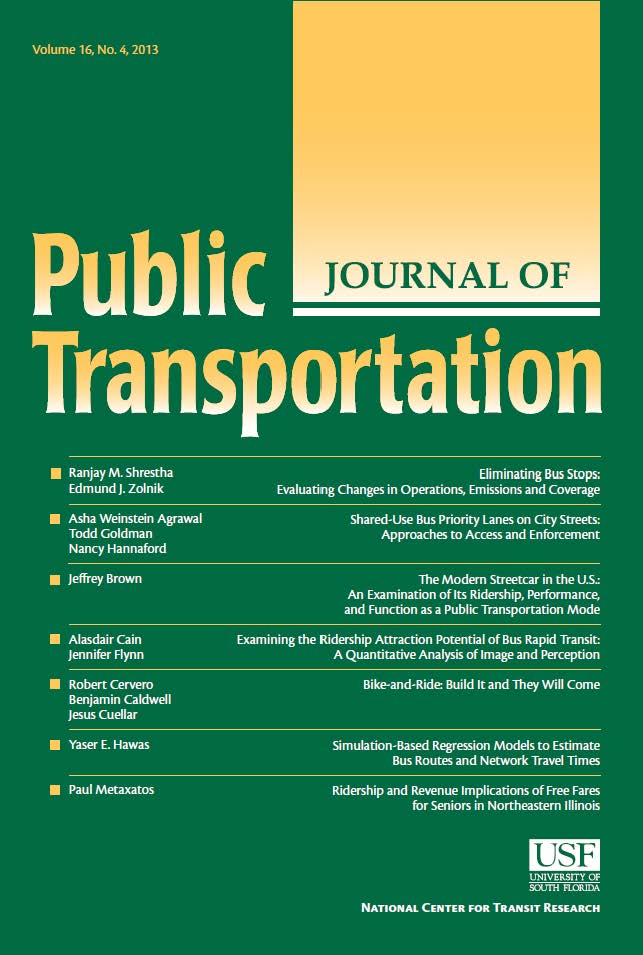您如何出行?对女性公共交通出行的整体评估:印度德里案例研究
IF 2
4区 工程技术
Q3 TRANSPORTATION
引用次数: 0
摘要
南亚和东南亚的妇女在使用非正规和正规公共交通工具出行时会遇到许多障碍。这些障碍往往是复杂的,根植于社会规范。以往的研究主要侧重于用户满意度调查,以评估公共交通出行的服务质量。对女性首末里程出行的了解非常有限,尤其是按收入群体划分。本研究通过制定详细的审计框架来评估整个公共交通旅程,包括使用中间公共交通(非正规)模式的首末里程旅行,从而填补了这一知识空白。本研究选择印度德里作为案例研究城市。该审计方法用于评估 45 次全程公共交通旅行,不同收入水平的出发地和目的地也不尽相同。此外,通过与不同收入水平的女性乘客在途中的交谈,对她们时刻注意人身安全以及为安全到达目的地而进行的详细预先计划提供了宝贵的见解。调查结果显示,低收入女性的处境最为不利。尽管有政府的乘车补贴,但她们仍要穿梭于简陋的建筑环境和缓慢的当地公交服务中。结果还显示,第一英里行程是整个行程中最薄弱的环节。这些调查结果表明,尽管政府试图改善交通系统,但该系统仍然没有为妇女,尤其是那些最弱势的妇女进行适当的设计。研究最后向决策者和从业人员提出了建议。本文章由计算机程序翻译,如有差异,请以英文原文为准。
How do you travel? A holistic evaluation of public transport journeys of women: A case study of Delhi, India
Women in South-and Southeast-Asia encounter numerous barriers when traveling with informal and formal public transport modes. These barriers are often complex and rooted in societal norms. Previous works have predominantly focused on user satisfaction surveys to evaluate service quality of public transport journeys. There is a very limited understanding of women’s first-and-last mile trips, especially by income groups. The present study contributes to this knowledge gap by developing a detailed audit framework to evaluate whole public transport journeys, including first-and last-mile trips with intermediate public transport (informal) modes. Delhi, India is chosen as the case study city. The audit is used to evaluate 45 whole public transport journeys, with a variation in origin-destination pairs by income levels. In addition, anecdotal findings through conversations with female commuters enroute, from varying income levels, provide valuable insights into their constant awareness for personal safety and the detailed pre-planning undertaken to reach their destinations safely. It is evident from the results that low-income women are the most disadvantaged. Despite rides being subsidized by the government, they navigate poorly built environments and slow local bus services. Results also showed that first mile trips are the weakest links in the whole journeys. These findings provide evidence that despite attempts to improve the transport system, it remains inadequately designed for women, particularly those who are most vulnerable. The study concludes with recommendations for policymakers and practitioners.
求助全文
通过发布文献求助,成功后即可免费获取论文全文。
去求助
来源期刊

Journal of Public Transportation
TRANSPORTATION-
CiteScore
6.40
自引率
0.00%
发文量
29
审稿时长
26 days
期刊介绍:
The Journal of Public Transportation, affiliated with the Center for Urban Transportation Research, is an international peer-reviewed open access journal focused on various forms of public transportation. It publishes original research from diverse academic disciplines, including engineering, economics, planning, and policy, emphasizing innovative solutions to transportation challenges. Content covers mobility services available to the general public, such as line-based services and shared fleets, offering insights beneficial to passengers, agencies, service providers, and communities.
 求助内容:
求助内容: 应助结果提醒方式:
应助结果提醒方式:


